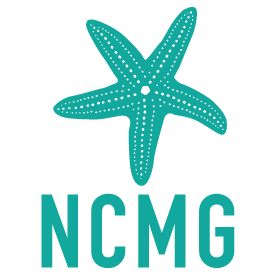What do scientists say about sanctuary zones?
Read the
scientific evidence.
To access a science paper simply click in the orange links below.
These papers have been collated for your convenience so you can gain a diverse range of scientific opinion on the benefits of marine sanctuary zones not only on biodiversity and ecosystems, but for recreational fishers.
Position Statement on Marine Protected Area
Australian Marine Sciences Association, October 2019
Fishing causes a decline in a fishery targeted species
Harasti, D., Davis, T.R., Jordan, A., Erskine, L., Moltschaniwskyj, N., (Snapper: Chrysophrys auratus) within a remote no-take marine protected area, PLoS ONE, 14(1): e0209926. https://doi.org/10.1371/journal., pone.0209926, 2019
Rapid declines across Australian fishery stocks indicate global sustainability targets will not be achieved without an expanded network of ‘no‐fishing’ reserves
Edgar, G.J., Ward, T.J. and Stuart‐Smith, R.D., Aquatic Conservation Marine and Freshwater Ecosystems, June 2018, pp. 1-14
Recreational fishers’ support for no-take marine reserves is high and increases with reserve age
Navarroa, M.,Kragta, M.E., Hailua, A. and Langloisb, T.J., Marine Policy, 96, (2018), pp.44-52
Changes in Fish Assemblages following the Establishment of a Network of No-Take Marine Reserves and Partially-Protected Areas
Kelaher, B.P., Coleman, M.A., Broad, A., Rees, M.J., Jordan, A. and Davis, A.R., PLoS ONE 9(1): e85825. doi:10.1371/journal.pone.0085825, 2014
Larval Export from Marine Reserves and the Recruitment Benefit for Fish and Fisheries
Harrison, H.B., Williamson , D.H., Evans, R.D., Almany, G.R., Thorrold, S.R., Russ, G.R., Feldheim, K.A., van Herwerden, L., Planes, S., Srinivasan, M., Berumen, M.L.and Jones, G.P., Current Biology, 22, (2012), pp.1023-1028
Enhanced biodiversity beyond marine reserve boundaries: The cup spillith over
Russ, G.R., and Alcala, A.C., Ecological Applications, 21(1), (2011), pp.241–250
Biological effects within no-take marine reserves: a global synthesis
Lester, S.E., Halpern, B.S., Grorud-Colvert, K., Lubchenco, J., Ruttenberg, B.I., Gaines, S.D., Airamé, S. and Warner, R.R., Marine Ecology Progress Series, 384 (2009), pp.33–46
Temperate marine reserves: global ecological effects and guidelines for future networks
Stewart, G.B., Kaiser, M.J., Côté, I.M, Halpern, B.S., Lester, S.L., Bayliss H.R. and Pullin, A.S., Conservation Letters, 2 (2009) pp.243–253
Marine Reserves: size and age do matter
Claudet, J., et.al., Ecology Letters, 11, (2008), pp. 481-489
Biological responses in marine no-take reserves versus partially protected areas
Lester, S.E. and Halpern, B.S., Marine Ecology Progress Series, 367, (2008), pp. 49-56
Changes in fish assemblages following 10 years of protection in Tasmanian marine protected areas
Barrett, N.S., Edgar, G.J., Buxton, C.D. and Haddon, M., Journal of Experimental Marine Biology and Ecology, 345 (2007), pp.141-157
Do partial marine reserves protect reef fish assemblages?
Denny, C.M. and Babcock, R.C., Biological Conservation, 116(1), (2003), pp.119-129
Conservation benefits of marine reserves for fish populations
Mosquera, I, Côté, I.M., Jennings, S. and Reynolds, J.D., Animal Conservation, 4, (2000), pp.321–332
An assessment of the effectiveness of Marine Protected Areas in the San Juan Islands, Washington, USA
Tuya, F.C., Soboil, M. and Kido, J., Journal of Marine Science, 57 (2000), pp.1218-1226




